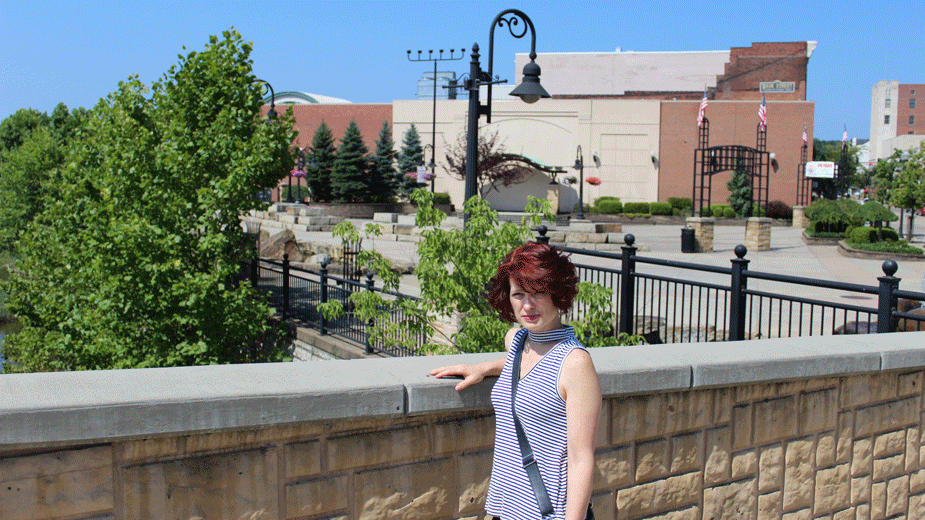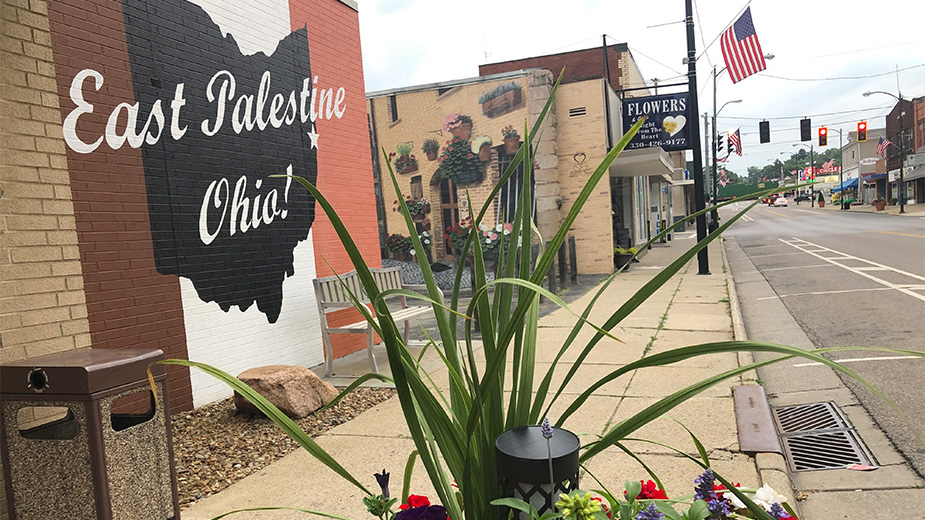New Castle’s Redevelopment Reflects New Purpose
NEW CASTLE, Pa. – The current has shifted along the banks of Neshannock Creek in downtown New Castle. For years, like most other Rust Belt towns, the downtown stumbled as the economy slumped. Businesses closed, some moved out and few came in to replace them.
But today, the central business district is bustling with activity. In 2008, the Riverplex opened and is home to restaurants and a small museum. Businesses such as North American Dental Group and Treloar & Heisel have set up their headquarters here.
On the eastern end of Washington Street, Infocision repurposed the former New Castle Dry Goods Co. building as a call center. Nearby, a developer has renovated Washington Center, now home to branches of PNC Bank and First National Bank of Pennsylvania, law offices and a real estate agency.
“Downtowns just have a cycle. We’re on the upward swing now with those successes,” says Alex McCoy, CEO of the Lawrence County Regional Chamber of Commerce. “You have to have a strong urban core. In New Castle, while we have synergistic relationships with Pittsburgh, Erie and Youngstown, we are far enough away to be our own micropolitan area. We have to be able to stand on our own.”
McCoy began as CEO in early June after the merger of the Lawrence County Economic Development Corp. and the Lawrence County Chamber of Commerce.

For those concerned with the development of New Castle, that means reaching across sectors to create a united front to tackle the issues the city faces. That front has taken the form of Blueprint Communities, a program sponsored by Federal Home Loan Bank of Pittsburgh that brings in leaders from across the community – development, business, government, education and others – and provides them with a course on community development. The result for the New Castle Blueprint Communities group was a 17-page plan that covered downtown revitalization and housing stabilization.
“We all began to realize that no one organization or agency could do it alone,” says Kimberly Coller-Jones, facilitator for Blueprint Communities and executive director of arts and education for the Hoyt Art Center. “By collaborating, we’re avoiding duplication and we’re picking up the pieces. It’s exactly like putting a puzzle together. Someone can do the perimeter while others do different parts of the inside. If we’re going to bring the whole picture together, we all need to work together.”
On the northern side of New Castle, in the neighborhoods that surround UPMC Jameson Hospital, efforts are focused on developing affordable housing.
Over the next few years, Coller-Jones says, the hospital will hire up to 250 employees, all of whom will need somewhere to live. Why not in the district that surrounds the hospital, the historic North Hill, she asks.
“They have a vested interest in the health of their community, so why not build from that to repopulate the vacant houses to increase property values?” she asks. “Perhaps there’s a tax incentive or a lower mortgage rate – or those sorts of things that can be packaged together and marketed to those employees to get them into the neighborhood.”
Nancy Schlegel, sales director for Northwood Realty Service’s Hermitage-New Castle-Greenville region, reports that the North Hill is “an up-and-coming area with great affordability.” In the first half of 2017, the West Penn Multiple Listing Service shows 389 houses have been sold within the city, compared to 382 last year, a “small change, but it matters,” she says.
As one of the city’s largest employers, the hospital is “the engine, especially with the changeover to UPMC” last year, says Linda Nitch, director of economic business development for the chamber. But the backbone of New Castle remains its industrial businesses, mostly on the western side of town.
The next step for industry, McCoy and Nitch note, will come with the arrival of cracker plants in the region, one being built by Royal Dutch Shell in Monaca, Pa. – about 30 miles south of New Castle – and another in Ohio’s Belmont County that potentially will be built by PTT Global Chemicals. The plants will almost certainly spur some growth in the New Castle area, officials agree.
Later this year, Mayor Anthony G. Mastrangelo adds, an ethanol business will move into a 20-acre site not far from downtown. “We’ve got the perfect place for it. That’ll bring in 60 or 70 employees to good-paying jobs. And you don’t have to have a degree. You can have a high-school education and they’ll train you,” he says.
Also coming is a medical marijuana grow site, one of 12 in the state, that should be in operation early next year.
“That’s going to bring in businesses and shops. They’re talking about starting with 50 jobs, maybe growing up to 100,” the mayor says. “That’s one start.”

Overall, Mastrangelo continues, the city is in a better spot than when he was first elected in 2007, but there’s still work to be done. Now that the municipality’s finances have been shored up, his attention has turned to grant applications and bringing in new businesses.
What will help are the efforts underway in the downtown under the purview of Blueprint Communities, which counts Mastrangelo, Nitch and McCoy among its participants.
A pedestrian and bicyclist pathway along Neshannock Creek is getting started. Eventually, Blueprint’s Coller-Jones says, that will serve as a path of development as buildings are modernized and become occupied. One of the draws for the city is its building stock. Many commercial buildings in downtown date back decades, as do the city’s houses, she notes.
“We want to retain those properties and their history, but not necessarily their use,” Coller-Jones says. “That path targets specific properties for centralized business services, office space, live/work space, an innovation hub, a farmers’ market and the elements that support the idea of an urban village downtown.”
The innovation hub, she continues, will focus on training food entrepreneurs in the STEM fields – science, technology, engineering and math – on how to better grow, package, market and distribute their foods. What spurred the decision to pursue food and agricultural businesses were the mostly rural areas that surround New Castle.
“Where industry and manufacturing were once big, now that’s changed,” she says. “The innovation hub is looking at what our asset is – the agriculture area around us – and developing it.”
Creating centers like that, says chamber CEO McCoy, allows New Castle to “build the product we’re selling,” which in turn will attract more, potentially larger, businesses.
“We can all agree that when we keep business in town and help small businesses open or bring new ones to town, there’s a tremendous value in that,” McCoy says. “When we take a prospect visit around the community, we want them to see a community that genuinely cares about itself, that takes pride in maintaining its historical character and is committed to shopping local. It sends a great message and helps them envision being here.”
With the developments around town – industrial additions on the western side and growing outward toward Interstate 376, retail and professional services downtown, medical services on the North Side – McCoy and Nitch say they see a new stage being built for New Castle.
“Facetiously, I’d say in five years, Pittsburgh and Youngstown will be claiming to be suburbs of New Castle,” he says and laughs. “I really see the community coming together and working to bring everybody forward.”
Pictured, top: Kimberley Coller-Jones leads Blueprint Communities, a community improvement group.
Pictured, middle:Alex McCoy is CEO of the Lawrence County Regional Chamber of Commerce, formed by the merger of Lawrence County Economic Development Corp. and Lawrence County Chamber of Commerce earlier this year.
Pictured, bottom: After years in the health industry, Anthony Mastrangelo was elected mayor in 2007.
Copyright 2024 The Business Journal, Youngstown, Ohio.



